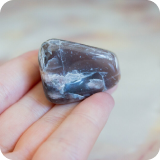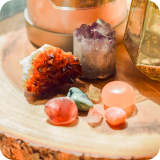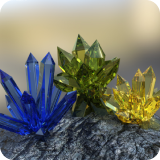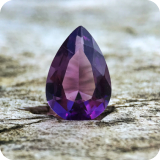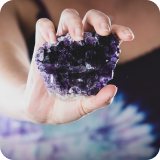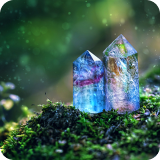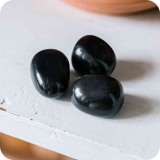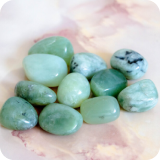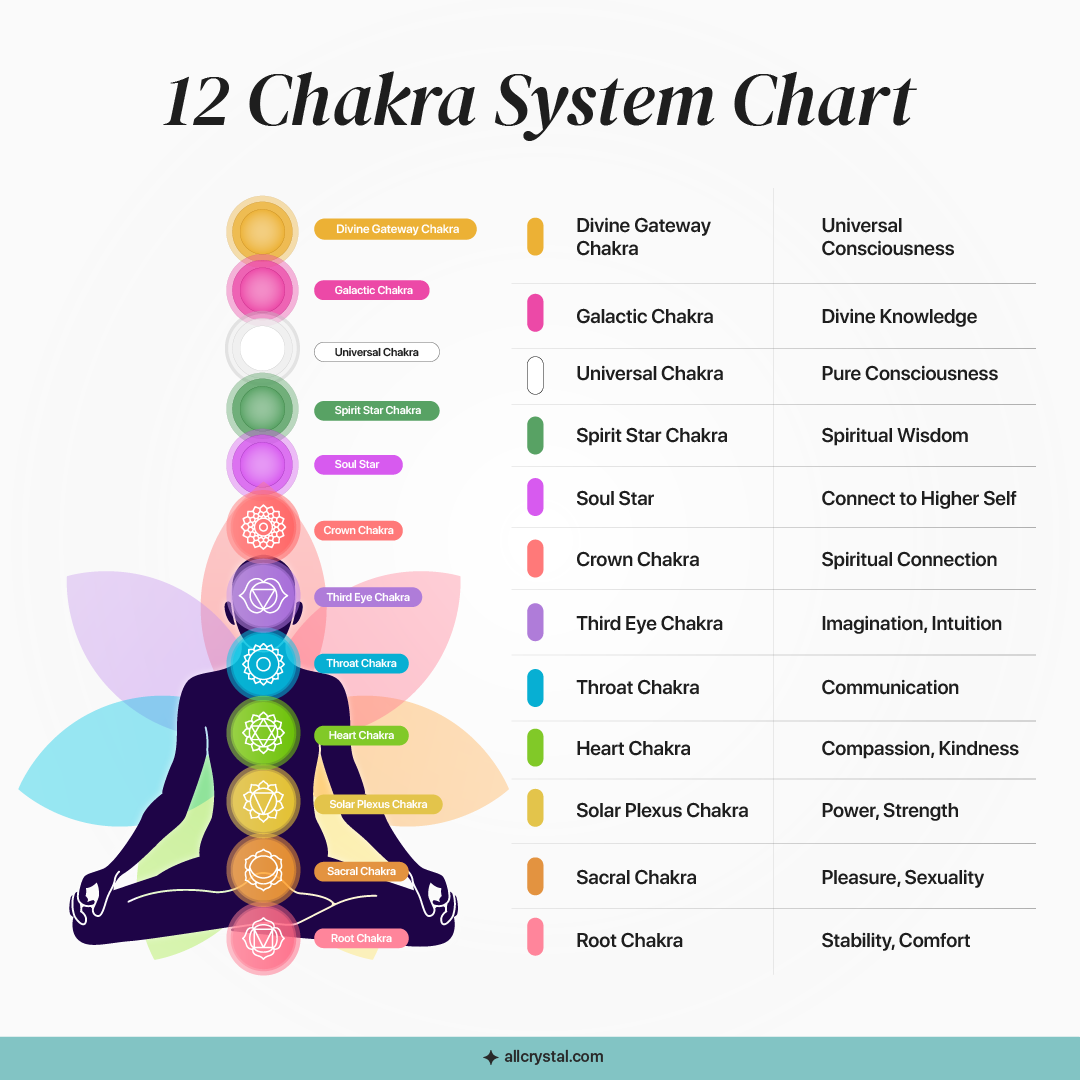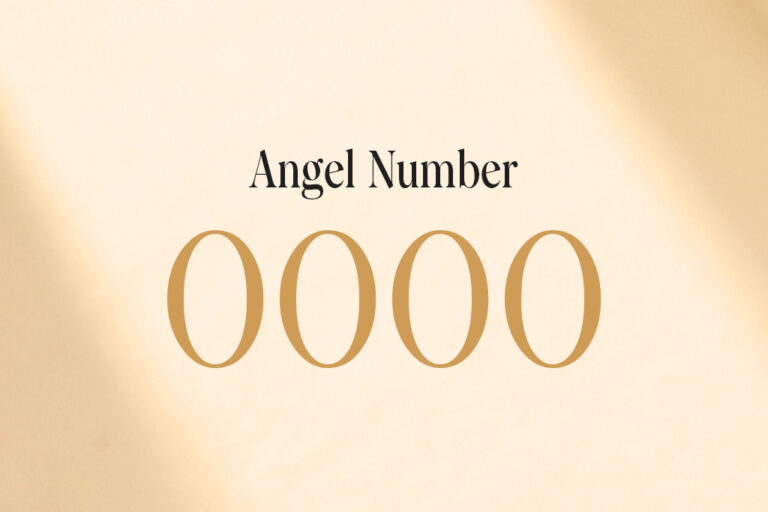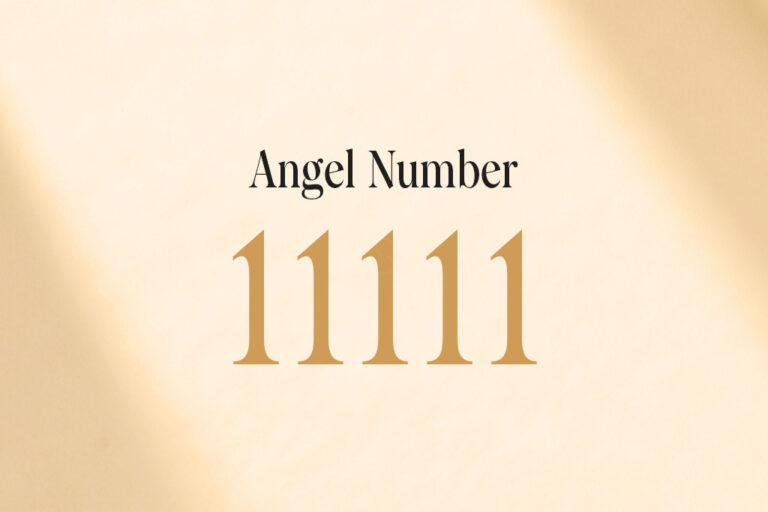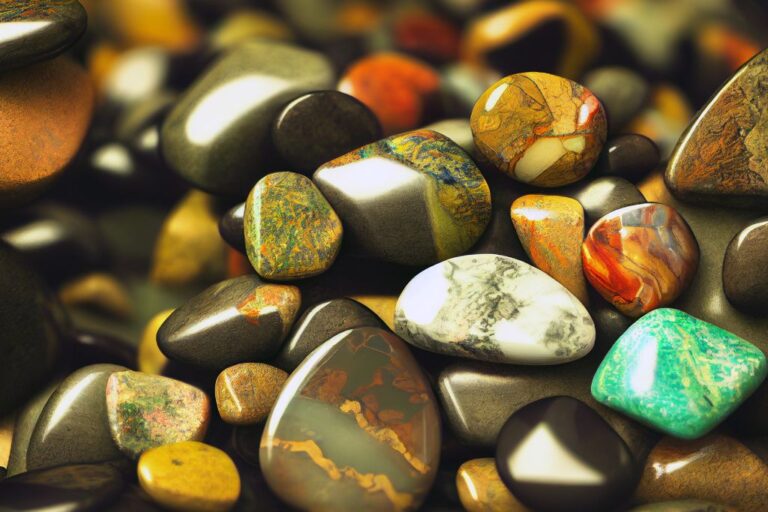Turkish Agate
(tur - kish ag - it)What is Turkish Agate?
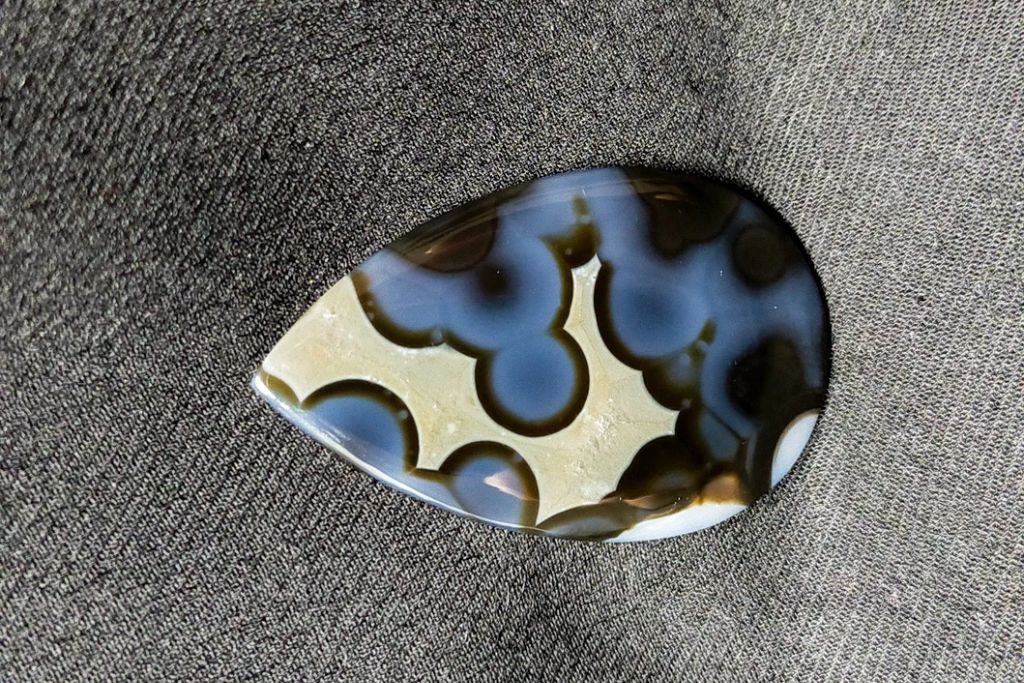
Turkey Agate is a mineral from Turkey that belongs to the Quartz family. It comes in many colors and unique banding patterns, with stripes, landscapes, clouds, and nature.
The stone is formed from silicon dioxide with a hint of minerals, such as iron and manganese. The name for this gorgeous stone came from the Ancient Greek description of “achates,” referencing the Achates River in which it was first discovered.
Having a rich history back to ancient times when it was highly prized for its healing properties and ornamental value, the stone was used by Ancient Egyptians, Greeks, and Romans as amulets and in jewelry.
Legends tell us that Turkish Agate was thought to shield its wearer from danger and build strength and courage. This gemstone was also said to have healing powers that could tackle ailments, like fever, difficulty sleeping, and skin issues.
Turkish Agate is still highly valued by crystal collectors today and is used in jewelry, home decor, and spiritual practices.
Turkish Agate Healing Properties and Benefits
Vitality and Energy
- Turkish Agate can strengthen your physical energy, vitality, and stamina with improvement to unlock new potential in achieving more.
- Place the crystal on the Solar Plexus or hold it during meditation. Make sure to place it under running water or sunlight for a few hours to charge and cleanse it.
Relief
- Clarity and stability are being promoted by Turkish Agate, providing much-needed respite from stress and anxiety throughout the day, especially during your busiest times or when pressure is at its peak.
- Hold the crystal or place it on the Root Chakra during meditation. To charge and cleanse it, bury it in the Earth for a few hours or use a sage smudging technique.
Purity
- One of Turkish Agate’s properties is to purify the mind and body, aiding in clarity of thought and concentration, perfect for studying or presenting.
- Hold the crystal or place it on the Third Eye Chakra during meditation. To charge and cleanse it, put it in a bowl of sea salt or under the light of a Full Moon.
Emotional Stability
- Turkish Agate promotes balance and inner peace and enhances positive energy flow for mental health.
- Hold the crystal or place it on the Heart Chakra during meditation. To charge and cleanse it, put it on a Selenite charging plate or cleanse it with sound using a singing bowl or bell.
Courage and Confidence
- One of the benefits of this gem is to boost confidence by stimulating the Root Chakra, providing clarity and focus and a greater sense of inner strength.
- Take a few moments to hold this stone in your hands and envision yourself full of strength, assurance, and conviction. Close your eyes as you picture having complete self-assurance.
Turkish Agate Spiritual Properties and Benefits

Psychic Abilities
- By utilizing thought to help individuals tap into their inner knowledge, they can trust and rely on their intuition when making decisions.
- Hold the crystal in your hand or place it on your Third Eye Chakra during meditation. You can tap into your inner wisdom and connect with the Universe’s energy.
Spiritual Guidance
- Another Turkish Agate benefit is to allow you to connect more easily with your spiritual guides and receive divine messages.
- Hold the crystal or place it on your Crown Chakra during meditation. You can strengthen your connection to the divine and receive guidance on your spiritual path.
Grounding
- This stone helps to instill a sense of presence, reducing panic and worry. It sharpens focus so that one can tackle any hurdle with an alert and serene mindset.
- Hold the crystal in your dominant hand during meditation, or place it near your Root Chakra.
Amplification and Manifestation
- Increase your energy and become more noticeable with crystal healing. Focus on what you want to manifest by amplifying the power of your aura. Let crystals help boost your drive, clarity, and determination.
- Hold this Turkish Agate stone while picturing what you want to manifest, and it will amplify your desires. Focusing on intentions enables the stone’s power to work through visualization as if they are already real.
Transformation
- When going through a period of transformation, Turkish Agate can provide a sense of stability, helping individuals to feel more secure and centered and allowing them to maintain balance during challenging times.
- Carry Turkish Agate for strength and personal growth during tough times. Its transformational properties make it a powerful ally.
Turkish Agate Side Effects
- Overstimulation: Turkish Agate boosts energy but can cause insecurity or unease in some people. Wear it for a limited time each day or on alternate days to reduce these effects.
- Insomnia: Turkish Agate has the power to boost energy levels, making it difficult for some people to sleep if they wear it before bedtime. To aid with sleeping patterns, use Turkish Agate during the day instead and remove it at night.
- Headaches: Overuse of Turkish Agate can cause headaches and migraines, so alternate its use with other stones if you experience these symptoms.
Turkish Agate Meaning: What Does Turkish Agate symbolize?
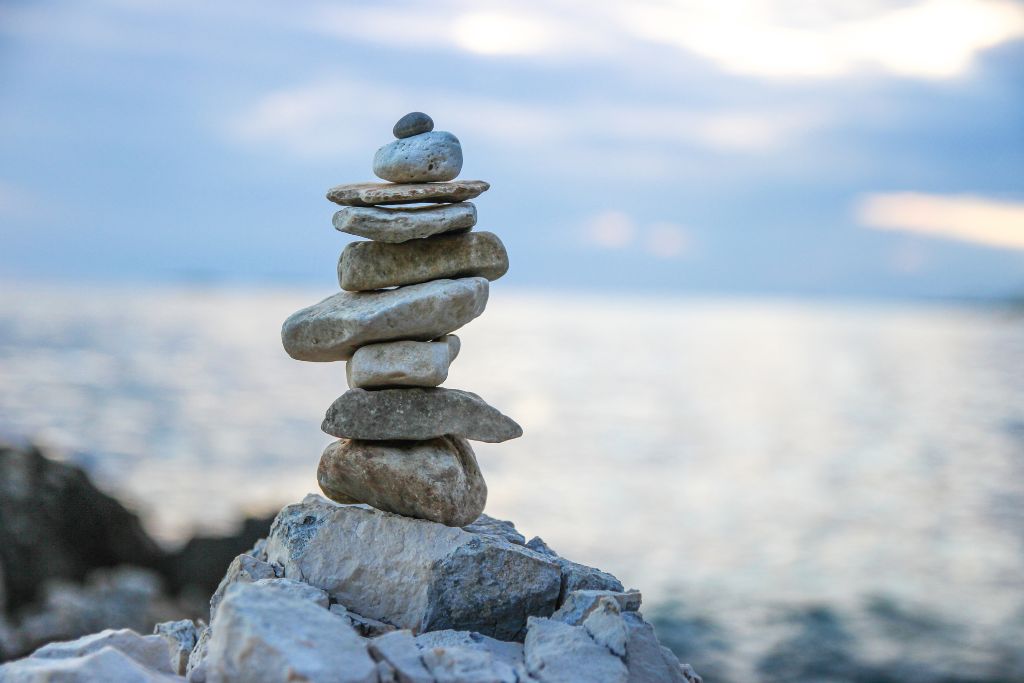
The Turkish Agate meaning is Grounding.
Turkish Agate is a type of stone that initially came from Turkey. People have been using it for a long time because it has healing powers. The Greeks, Romans, and other ancient cultures also used it to make things.
Some cultures believed it could ward off the evil eye, while others believed it could protect against snake bites. In Turkey, it was thought that wearing a Turkish Agate amulet could bring good luck and prosperity.
There are stories about how Turkish Agate was made. People say it was made from the tears of Athena, the Greek Goddess. In another story, people believe it came from the blood of Medusa, a mythical Greek monster.
Did you know that Turkish Agate is a Banded Agate with visible layers of color and texture? The patterns and colors make it famous for creating jewelry and decorative objects.
Types of Turkish Agate
- Common Turkish Agate: Gray or brownish-gray in color, this variety is believed to enhance physical strength and provide emotional balance.
- Gray Turkish Agate: With its calming, pale gray hue, this color is a beautiful way to reduce stress and bring about an atmosphere of tranquility.
- Turkish White Agate: Translucent white stones enhance mental clarity and spiritual awareness.
- Banded Turkish Agate: These multicolored bands are thought to offer stability and inner power, both physical healing and spiritual energy.
- Blue Turkish Agate: With its serene energy, Blue Turkish Agate builds the courage to start deep communication and brings inner tranquility.
- Turkish Stick and Orb Agate: Turkish Stick Agate is a long, cylindrical stone with swirling patterns that are believed to help with manifestation and spiritual growth.
- Turkish Agate Thundereggs: Brown and gray patterns resembling a cracked egg are believed to provide protection and stability. This type of Agate is often used in crystal healing to promote feelings of safety and security.
- Turkish Plume Agate: Pink and white plumes with a calming energy enhances creativity and emotional healing.
- Turkish Agate Nodules: Gray or brown stones with grounding properties aid in manifestation and provide stability.
- Pink Turkish Agate: A pink stone with a gentle energy that enhances self-love and emotional healing. This type of Agate is used to promote self-acceptance and self-care.
- Red Turkish Agate: A red stone with energizing properties that enhance vitality and physical strength. It is used to promote feelings of strength and courage.
- Botryoidal Turkish Agate: A round cluster stone with a calming effect that fosters emotional healing and inner peace.
- Turkish Eye Agate: A gray or brown stone with a “Third Eye” marking that enhances intuition and psychic abilities.
- Turkish Yellow Agate: A yellow stone with a joyful energy that enhances confidence and personal power.
- Multicolor Turkish Agate: A stone with multiple colors that can help balance and harmonize energy for overall well-being.
- Turkish Snowflake Agate: A White Agate with distinctive snowflake-like patterns. It helps individuals always speak the truth.
- Turkish Lace Agate: A translucent stone with patterns of designs that focuses on improving communication abilities.
- Turkish Flame Agate: A red and yellow stone with fiery energy, it is believed to stimulate creativity and passion, making it a great choice for artists and creators. Its fiery energy can also help to overcome creative blocks and enhance focus.
- Turkish Red Fox Agate: Reddish-brown stones with grounding properties are ideal for manifestations. It transpires acceptance and confidence toward achieving desired goals.
- Black Turkish Agate: Black Agate is known for its protective properties, and it overcomes negative energy and provides grounding.
- Brown Turkish Agate: Brown stones with stabilizing properties, promote inner strength and emotional balance.
- Purple Turkish Agate: Purple stones focus on spiritual properties, which enhance intuition and aid in spiritual growth.
- Turkish Fire Agate: Red and orange stones with fiery energy, this variety enhances passion and creativity. Its vibrant energy can help stimulate the Root Chakra, promoting self-confidence and personal power.
- Turkish Botswana Agate: Gray stones with unique patterns, can be helpful for those experiencing anxiety since it encourages openness and self-expression.
- Dendritic Turkish Agate: Translucent Dendritic Agate is a unique tree-like pattern that enhances personal growth and connects one with nature.
- Turkish Pseudomorph Agate: These unique formations promote transformative properties. They aim to aid in personal growth and change.
- Amethyst in Turkish Agate: Purple stones with spiritual properties, can enhance intuition and aid in spiritual growth. It is often used during meditation to promote a deeper connection with the divine and higher consciousness.
How To Cleanse Turkish Agate?
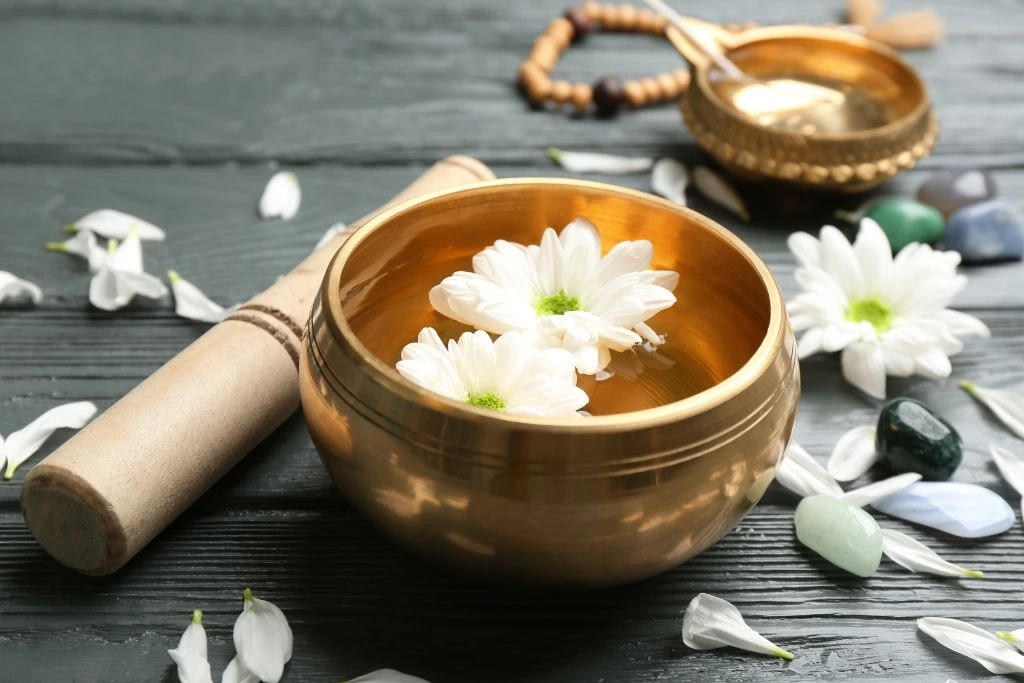
- Soil: Bury it in the Earth for 24 hours while reciting positive affirmations. Then uncover your crystal and rinse it with water to complete the cleansing ritual!
- Singing Bowl: Place the crystal near a singing bowl and tap it while intently visualizing the cleansing action.
- Sunlight: Place the crystal in direct sunlight for a few hours, allowing the Sun’s energy to clear any negative energy stored within the crystal.
Questions and Answers
Turkish Agate is a type of Chalcedony, a mineral in the Quartz family.
Turkish Agate is formed through silica deposition in volcanic cavities or rock cracks.
Turkish Agate is believed to have various benefits for emotional healing, creativity, grounding, and balance.
Turkish Agate has distinct bands or stripes of colors, like brown, orange, red, and white, arranged in intricate patterns, with some parts being translucent or opaque, and the colors and patterns differing among each stone.
Yes, Turkish Agate can be safely cleaned with water, but avoid prolonged exposure to water or soaking.
Yes, Turkish Agate is safe to use in the sunlight or any other light source. It’s best to avoid leaving the crystal exposed for more than four hours, as this may cause a change in color and structure.
You can tell if Turkish Agate is real by looking for unique patterns, colors, and translucent or opaque appearance.
To take care of Turkish Agates, wrap them in a soft cloth and clean them with a soft brush.
Turkish Agate can be paired with Pyrite, Lapis Lazuli, or Amethyst to enhance creativity, communication, and emotional well-being.
No, Turkish Agate is affordable and commonly found in stores. Depending on each stone’s size, quality, and rarity, its price typically falls between $5 and $30 per piece.
No. Soaking Turkish Agate in salt or saltwater may damage the stone’s surface.
No, Turkish Agate is not the same as Turkish Rare Stone. Turkish Rare Stone, also known as Zultanite, is a gemstone that changes color under different light sources.
Interactions with Turkish Agate
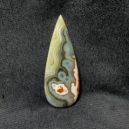
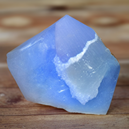
Turkish Agate vs. Blue Calcite
Turkish Agate and Blue Calcite can be worn together since they share friendly ruling planets, promoting communication, creativity, emotional healing, and inner peace.
| Crystal | Turkish Agate | Blue Calcite |
| Chakras | Root, Sacral, Solar Plexus, Heart, Throat, Third Eye, and Crown. | Third Eye and Throat. |
| Ruling Planet | Sun, Moon, Mercury, Venus, Earth, Mars, Jupiter, Saturn, Neptune, Uranus, and Pluto. | Venus and Mercury. |
| Ruling Element | Earth, Fire, Air, Water, Light, and Ether. | Air, Water, Fire, and Wood. |
| MOHS | 6.5 to 7. | 3 |

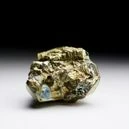
Turkish Agate vs. Pyrite
Uniting Turkish Agate and Pyrite together can promote motivation, vitality, and creativity because the two elements share their ruling planets
| Crystal | Turkish Agate | Pyrite |
| Chakras | Root, Sacral, Solar Plexus, Heart, Throat, Third Eye, and Crown. | Solar Plexus and Root. |
| Ruling Planet | Sun, Moon, Mercury, Venus, Earth, Mars, Jupiter, Saturn, Neptune, Uranus, and Pluto. | Mars and Sun. |
| Ruling Element | Earth, Fire, Air, Water, Light, and Ether. | Fire and Earth. |
| MOHS | 6.5 to 7. | 3 to 6.5. |

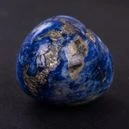
Turkish Agate vs. Lapis Lazuli
Wear Turkish Agate and Lapis Lazuli together for enhanced creativity, communication, intuition, and mental clarity. They share the ruling planets Mars and Sun.
| Crystal | Turkish Agate | Lapis Lazuli |
| Chakras | Root, Sacral, Solar Plexus, Heart, Throat, Third Eye, and Crown. | Third Eye and Throat. |
| Ruling Planet | Sun, Moon, Mercury, Venus, Earth, Mars, Jupiter, Saturn, Neptune, Uranus, and Pluto. | Saturn |
| Ruling Element | Earth, Fire, Air, Water, Light, and Ether. | Air and Water. |
| MOHS | 6.5 to 7. | 5.5 to 6. |
Most viewed articles from Turkish Agate Crystal
